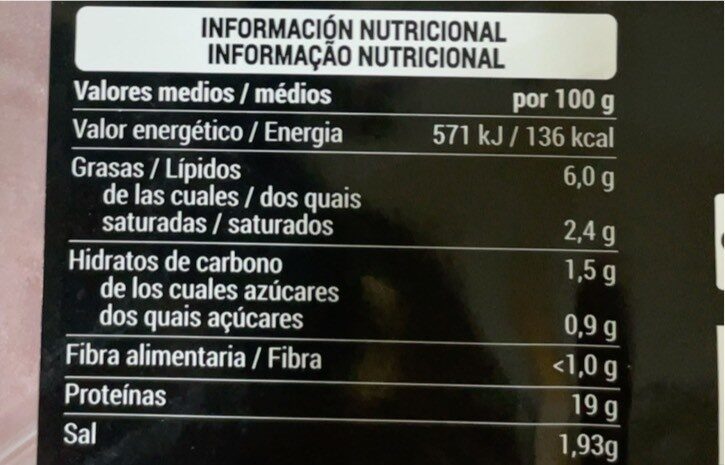Jamón cocido - Noel - 120 g
This product page is not complete. You can help to complete it by editing it and adding more data from the photos we have, or by taking more photos using the app for Android or iPhone/iPad. Thank you!
×
Barcode: 8410783333417 (EAN / EAN-13)
Quantity: 120 g
Brands: Noel
Categories: Meats and their products, Meats, Prepared meats, Hams, White hams
Labels, certifications, awards:
No gluten, Green Dot, No colorings, No lactose
Matching with your preferences
Environment
Carbon footprint
Packaging
Transportation
Report a problem
Data sources
Product added on by kiliweb
Last edit of product page on by naruyoko.
Product page also edited by acuario, ecoscore-impact-estimator, elcoco, moon-rabbit, musarana, openfoodfacts-contributors, roboto-app, teolemon, yuka.IqhGZtygBpMTGMHg99gx4B2hOO7GUv1DFVAfoQ, yuka.J4geDISsLsUhOsfx87se7TGYTMfLKfkHMSYXog, yuka.UKlIFvywEtQIHsbIj7Ap5R2aJe7iGtFGQS4Hog, yuka.VZ5TBs6HMv0_JPfR4YMf8grjS-j_DP5oCiUGog, yuka.XatHOf2hPu4gEvPu9pAmwziLMtflAdFEHW4Hog, yuka.YTUwQUlva1FyS0VvcXZJNC9ocmZxdEphbWFDRVdtQ2RGZGM2SVE9PQ, yuka.sY2b0xO6T85zoF3NwEKvlktcU8XApA7cB0DlyVCt-tePCJazZfRC46Tdaqs, yuka.sY2b0xO6T85zoF3NwEKvlnxKYvXT-xnGCi7RtRXRnfS1Er62QMko2KvgN6s.











